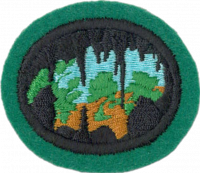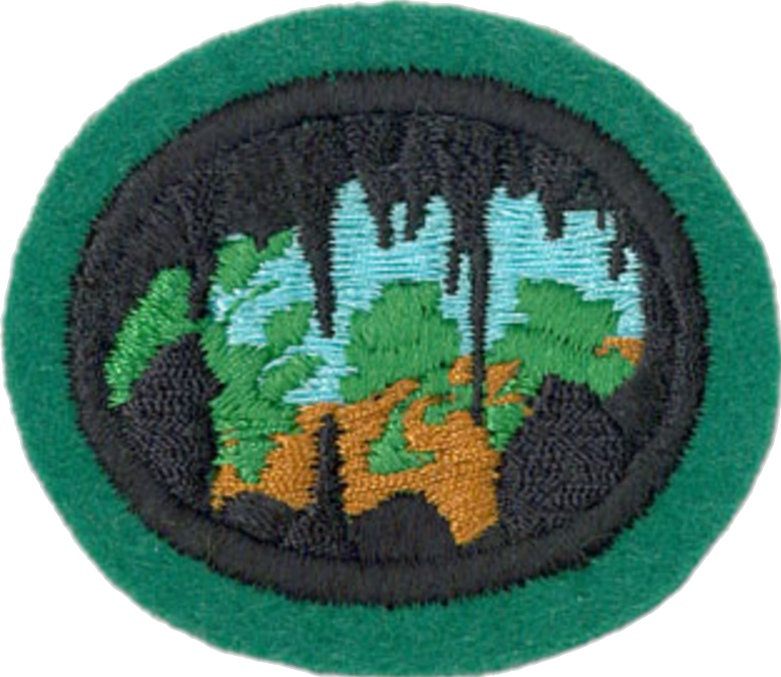Difference between revisions of "AY Honors/Caving/Answer Key/es"
(Created page with "</noinclude> ==References==") |
|||
| (22 intermediate revisions by 2 users not shown) | |||
| Line 1: | Line 1: | ||
| − | + | {{HonorSubpage}} | |
| − | + | <!--{{Honor_Master|honor=Caving|master=Recreation}}--> | |
| − | {{ | ||
| − | |||
| − | |||
| − | |||
| − | |||
| − | |||
| − | |||
| − | |||
| − | }} | ||
| − | |||
| − | {{Honor_Master | ||
| − | |||
| − | |||
| − | |||
<section begin="Body" /> | <section begin="Body" /> | ||
{{ansreq|page={{#titleparts:{{PAGENAME}}|2|1}}|num=1}} | {{ansreq|page={{#titleparts:{{PAGENAME}}|2|1}}|num=1}} | ||
<noinclude></noinclude> | <noinclude></noinclude> | ||
| − | <!-- 1. | + | <!-- 1. Conocer al menos tres fuentes de luz para la espeleología. Conocer la importancia de contar con suministros extras de luz y las luces de reserva. Pedir a una persona con experiencia en espeleología que le muestre cómo una luz de carburo funciona. --> |
| − | + | {{clear}} | |
| − | |||
| − | |||
| − | |||
| − | |||
| − | |||
| − | |||
| − | + | Es extremadamente importante tener al menos tres fuentes de luz en caso de que falle una luz. Su luz primaria y secundaria deben poder montarse en la cabeza, pero es mejor si las tres fuentes de luz se pueden montar en la cabeza. | |
| − | + | {{clear}} | |
| − | |||
<noinclude></noinclude> | <noinclude></noinclude> | ||
| Line 37: | Line 16: | ||
{{ansreq|page={{#titleparts:{{PAGENAME}}|2|1}}|num=2}} | {{ansreq|page={{#titleparts:{{PAGENAME}}|2|1}}|num=2}} | ||
<noinclude></noinclude> | <noinclude></noinclude> | ||
| − | <!-- 2. | + | <!-- 2. Hacer una lista de todos los equipos necesarios para el éxito de una salida de espeleología excluyendo los equipos de descenso vertical y comenzar a elaborar juego de equipos. --> |
| − | + | {{clear}} | |
| − | |||
| − | |||
| − | |||
| − | |||
| − | |||
| − | |||
| − | |||
| − | |||
| − | |||
| − | |||
| − | |||
| − | |||
| − | |||
| − | |||
| − | + | {{clear}} | |
| − | |||
| − | |||
| − | |||
| − | |||
| − | |||
| − | |||
<noinclude></noinclude> | <noinclude></noinclude> | ||
| Line 67: | Line 26: | ||
{{ansreq|page={{#titleparts:{{PAGENAME}}|2|1}}|num=3}} | {{ansreq|page={{#titleparts:{{PAGENAME}}|2|1}}|num=3}} | ||
<noinclude></noinclude> | <noinclude></noinclude> | ||
| − | <!-- 3. | + | <!-- 3. Localizar un espeleólogo experimentado y unirse a esa persona en la exploración de por lo menos tres cuevas relativamente fáciles. --> |
| − | + | {{clear}} | |
<noinclude></noinclude> | <noinclude></noinclude> | ||
| Line 75: | Line 34: | ||
{{ansreq|page={{#titleparts:{{PAGENAME}}|2|1}}|num=4}} | {{ansreq|page={{#titleparts:{{PAGENAME}}|2|1}}|num=4}} | ||
<noinclude></noinclude> | <noinclude></noinclude> | ||
| − | <!-- 4. | + | <!-- 4. Mantener un registro de estas exploraciones, señalando la fecha, ubicación de las cuevas, condiciones, características, horas dedicadas a cada una, los nombres de los otros miembros de su equipo y el nombre del líder del viaje. --> |
| − | |||
<noinclude></noinclude> | <noinclude></noinclude> | ||
| Line 82: | Line 40: | ||
{{ansreq|page={{#titleparts:{{PAGENAME}}|2|1}}|num=5}} | {{ansreq|page={{#titleparts:{{PAGENAME}}|2|1}}|num=5}} | ||
<noinclude></noinclude> | <noinclude></noinclude> | ||
| − | <!-- 5. | + | <!-- 5. Aprender, conocer bien y practicar las normas de seguridad de espeleología. --> |
| − | |||
| − | |||
| − | |||
| − | |||
| − | |||
| − | |||
| − | |||
| − | |||
| − | |||
| − | + | Solo tome fotos, solo deje huellas, no mates nada mas que el tiempo (esto incluye no tocar o romper las formaciones de piedra en la cueva que tardan años para «crecer»). Muchas personas se han lastimado en las cuevas tratando de conseguir una formación fuera del alcance de la cueva para llevarse a casa. | |
<noinclude></noinclude> | <noinclude></noinclude> | ||
| Line 99: | Line 48: | ||
{{ansreq|page={{#titleparts:{{PAGENAME}}|2|1}}|num=6}} | {{ansreq|page={{#titleparts:{{PAGENAME}}|2|1}}|num=6}} | ||
<noinclude></noinclude> | <noinclude></noinclude> | ||
| − | <!-- 6. | + | <!-- 6. Practicar «caminar» en una empinada cuesta tirando de sí mismo a lo largo de una cuerda. --> |
| − | |||
| − | + | {{clear}} | |
<noinclude></noinclude> | <noinclude></noinclude> | ||
| Line 108: | Line 56: | ||
{{ansreq|page={{#titleparts:{{PAGENAME}}|2|1}}|num=7}} | {{ansreq|page={{#titleparts:{{PAGENAME}}|2|1}}|num=7}} | ||
<noinclude></noinclude> | <noinclude></noinclude> | ||
| − | <!-- 7. | + | <!-- 7. Describir varias maneras en que las cuevas fueron utilizadas en los tiempos bíblicos. --> |
| − | |||
| − | |||
| − | |||
| − | |||
| − | |||
| − | |||
| − | |||
| − | |||
| − | |||
| − | |||
| − | |||
| − | |||
| − | |||
| − | |||
<noinclude></noinclude> | <noinclude></noinclude> | ||
| Line 128: | Line 62: | ||
{{ansreq|page={{#titleparts:{{PAGENAME}}|2|1}}|num=8}} | {{ansreq|page={{#titleparts:{{PAGENAME}}|2|1}}|num=8}} | ||
<noinclude></noinclude> | <noinclude></noinclude> | ||
| − | <!-- 8. | + | <!-- 8. Participar en el proceso de mapeo de una pequeña cueva que ha explorado. --> |
| − | + | {{clear}} | |
<noinclude></noinclude> | <noinclude></noinclude> | ||
| Line 136: | Line 70: | ||
{{ansreq|page={{#titleparts:{{PAGENAME}}|2|1}}|num=9}} | {{ansreq|page={{#titleparts:{{PAGENAME}}|2|1}}|num=9}} | ||
<noinclude></noinclude> | <noinclude></noinclude> | ||
| − | <!-- 9. | + | <!-- 9. Conocer los nombres de al menos cinco diferentes términos de espeleología y tres animales que habitan en las cuevas. Incluir en el informe los que ha observado mientras realizaba la espeleología. --> |
| − | |||
| − | |||
| − | |||
| − | |||
| − | |||
| − | |||
| − | |||
| − | |||
| − | |||
| − | |||
| − | |||
| − | |||
| − | |||
| − | |||
| − | |||
| − | |||
| − | |||
| − | |||
| − | |||
| − | |||
| − | |||
| − | |||
| − | |||
| − | + | {{clear}} | |
| − | |||
| − | |||
| − | |||
| − | |||
| − | |||
| − | |||
<noinclude></noinclude> | <noinclude></noinclude> | ||
| Line 174: | Line 79: | ||
{{ansreq|page={{#titleparts:{{PAGENAME}}|2|1}}|num=10}} | {{ansreq|page={{#titleparts:{{PAGENAME}}|2|1}}|num=10}} | ||
<noinclude></noinclude> | <noinclude></noinclude> | ||
| − | <!-- 10. | + | <!-- 10. Escribir un informe de su experiencia de al menos 500 palabras de las 10 o más horas de espeleología e incluir todo lo que ha aprendido mientras llevó a cabo los nueve requisitos anteriores. --> |
| − | |||
<noinclude></noinclude> | <noinclude></noinclude> | ||
{{CloseReq}} <!-- 10 --> | {{CloseReq}} <!-- 10 --> | ||
<noinclude></noinclude> | <noinclude></noinclude> | ||
| − | == | + | ==Referencias== |
{{clear}} | {{clear}} | ||
| Line 188: | Line 92: | ||
{{clear}} | {{clear}} | ||
| − | ==Nota | + | ==Nota histórica== |
El parche para Espeleología fue cambiado para mostrar la vista de una cueva en vez de una persona en una cuerda. Vea a las bandas de las personas que han sido Conquistadores por mucho tiempo para buscar el parche antiguo. | El parche para Espeleología fue cambiado para mostrar la vista de una cueva en vez de una persona en una cuerda. Vea a las bandas de las personas que han sido Conquistadores por mucho tiempo para buscar el parche antiguo. | ||
[[Category:Adventist Youth Honors Answer Book/es]] | [[Category:Adventist Youth Honors Answer Book/es]] | ||
<noinclude></noinclude> | <noinclude></noinclude> | ||
| − | + | {{CloseHonorPage}} | |
Latest revision as of 20:48, 9 April 2021
1
Es extremadamente importante tener al menos tres fuentes de luz en caso de que falle una luz. Su luz primaria y secundaria deben poder montarse en la cabeza, pero es mejor si las tres fuentes de luz se pueden montar en la cabeza.
2
3
4
5
Solo tome fotos, solo deje huellas, no mates nada mas que el tiempo (esto incluye no tocar o romper las formaciones de piedra en la cueva que tardan años para «crecer»). Muchas personas se han lastimado en las cuevas tratando de conseguir una formación fuera del alcance de la cueva para llevarse a casa.
6
7
8
9
10
Referencias
Nota histórica
El parche para Espeleología fue cambiado para mostrar la vista de una cueva en vez de una persona en una cuerda. Vea a las bandas de las personas que han sido Conquistadores por mucho tiempo para buscar el parche antiguo.


